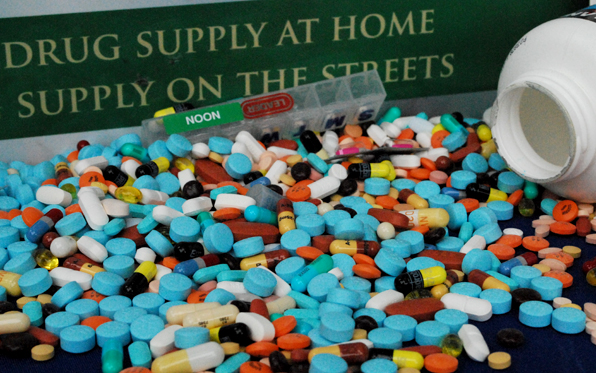A strategy started locally to prevent prescription drug abuse by restricting painkiller use in emergency rooms is catching on across the state.
The California Department of Public Health is working with other state agencies to adopt guidelines based on the Safe Prescribing Guidelines in Emergency Departments, which was developed by health officials and medical leaders from San Diego and Imperial counties to reduce deaths and addiction due to prescription drugs.
“San Diego County’s substance abuse prevention efforts are often a model for other counties in the state, and the nation,” said Vice Chairman Dave Roberts, who represents the Board of Supervisors on the County’s Prescription Drug Abuse Task Force. “The County has been and continues to aggressively fight the prescription drug problem in the region to prevent abuse and deaths.”
According to the most recent statistics available, 259 people died from prescription drug abuse in San Diego County in 2013, a slight decrease from the previous year when 268 deaths were reported.
The Safe Prescribing Guidelines establishes 10 practices for local emergency departments to consider when dispensing painkillers. Among them:
- We do not usually prescribe pain medication if you already receive pain medication from another health care provider. You should have only ONE provider and ONE pharmacy helping you with pain.
- If pain medications are needed, we can only give a small amount.
- We do not refill stolen prescriptions. We do not fill lost prescriptions.
- We do not prescribe long-acting pain medications: OxyContin, MSContin, Dilaudid, fentanyl, methadone
- We may ask you to show a photo ID when you receive a prescription for pain medication.
- We use a statewide computer system that tracks opioid and other controlled substance prescriptions.
“Prescription drug abuse is a problem with serious repercussions to quality of life in our region,” said Nick Macchione, director of the County Health and Human Services Agency. “Preventing drug abuse and getting people into treatment is one of the goals of Live Well San Diego, the County’s ongoing initiative to improve the health of San Diego County residents.”
The County funds prevention and treatment services throughout the region. Treatment is available by calling the County’s Access and Crisis Line at (888) 724-7240.
People are also encouraged to report drug activity in their community to their local police department or sheriff’s station. They can also call Prescription Drug Hotline at (877) 662-6384. Information about local efforts is also available at SanDiegoRxAbuseTaskForce.org.






